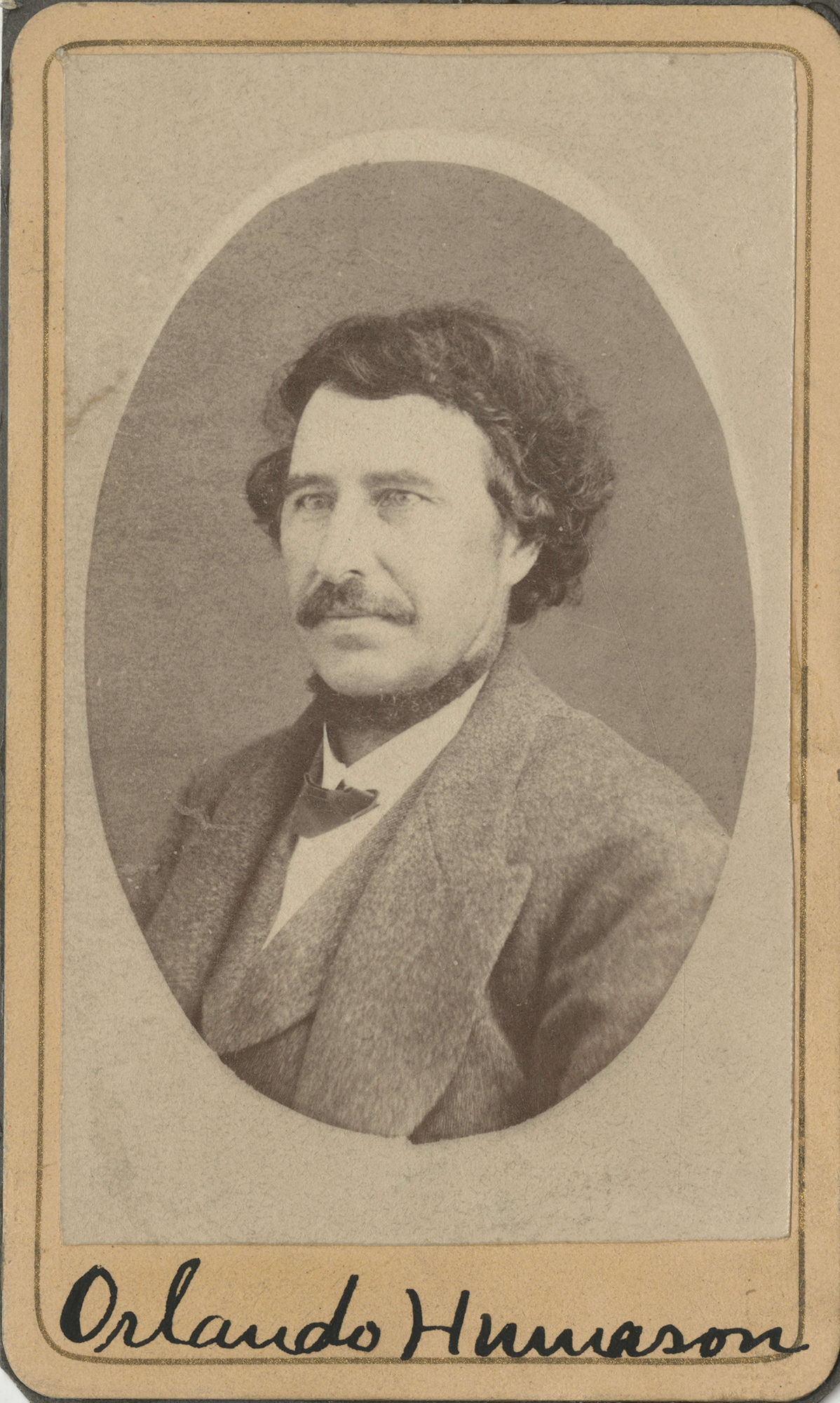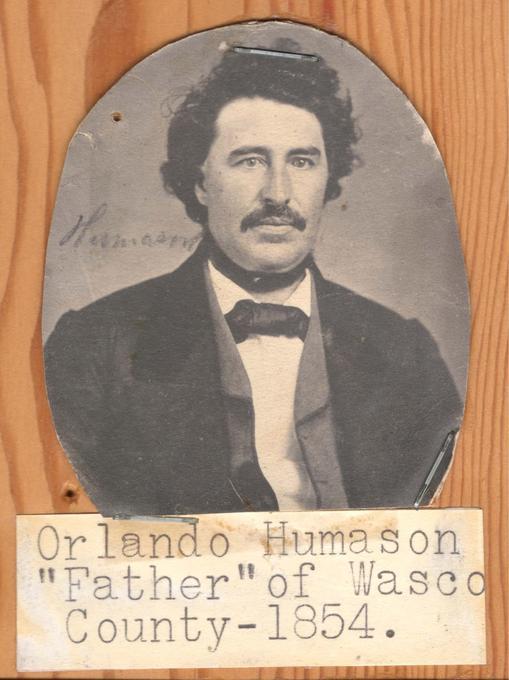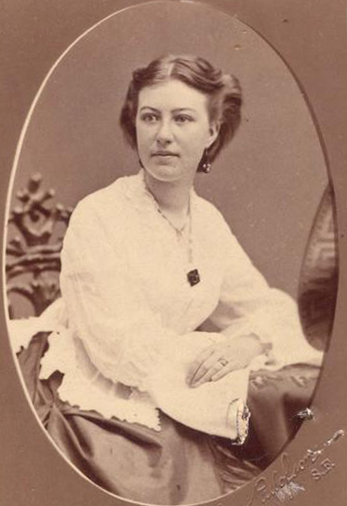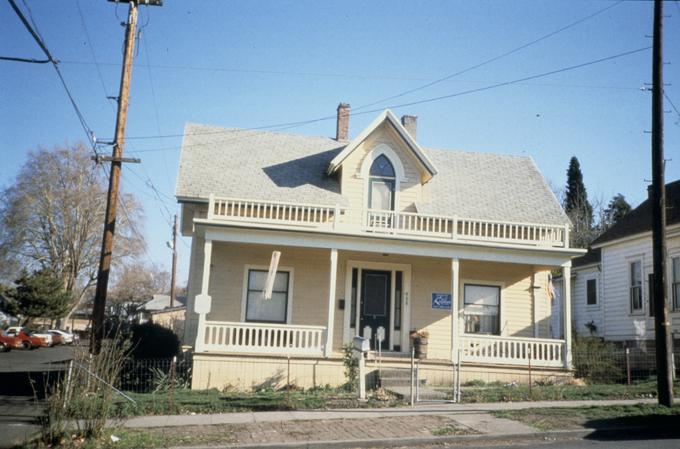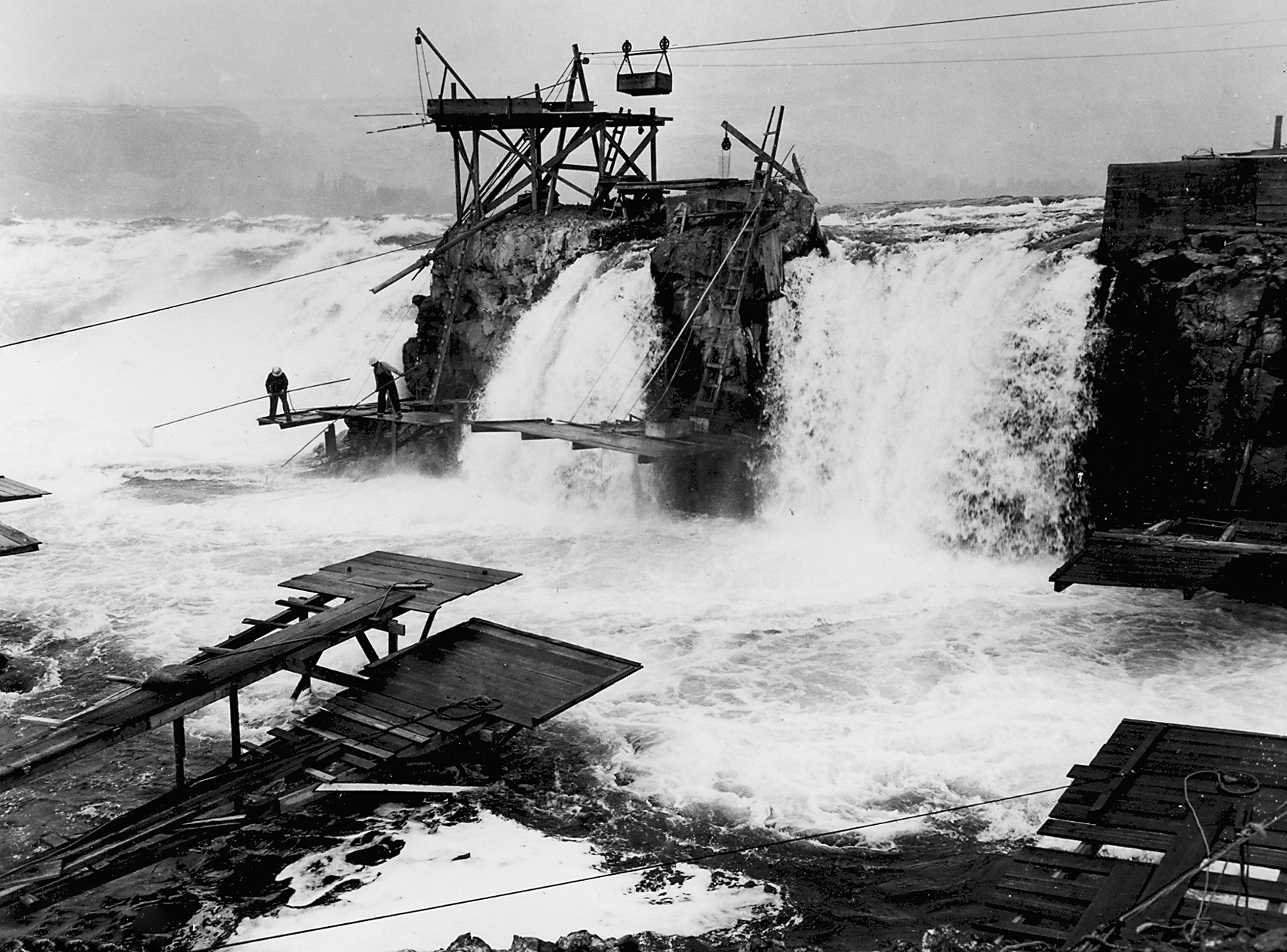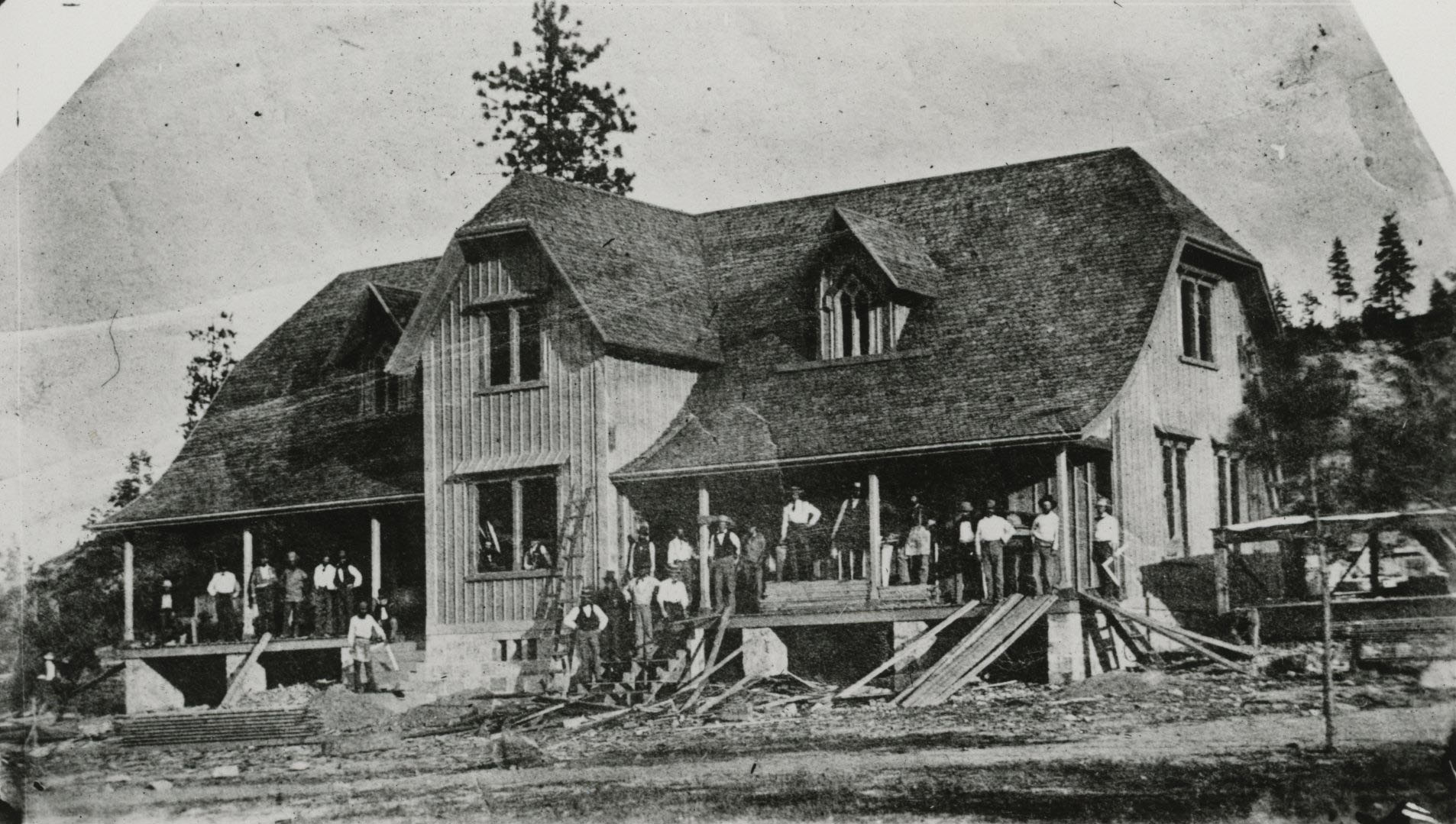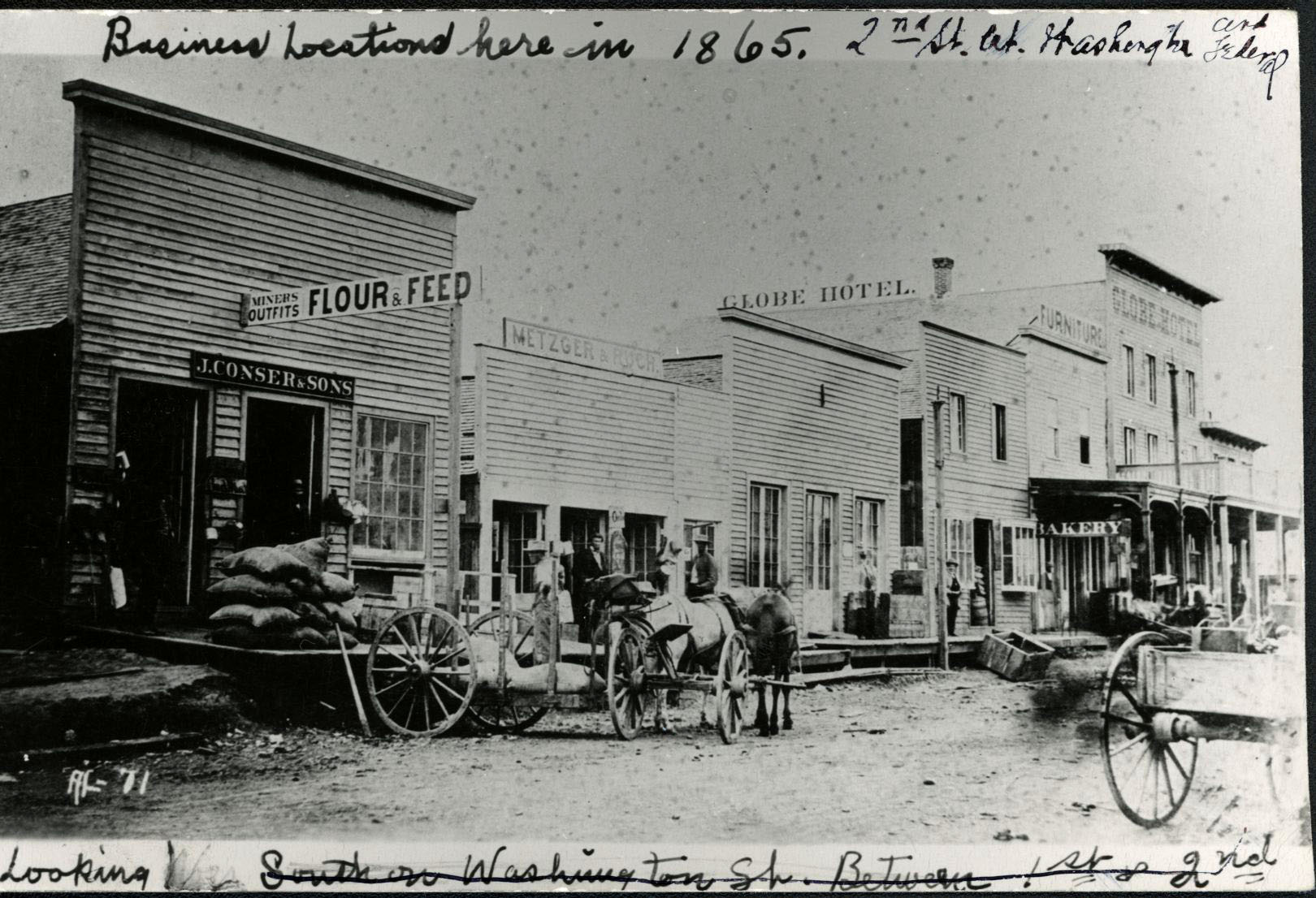Often referred to as the Father of Wasco County, Orlando Humason helped establish Wasco County, served on The Dalles’ first governing board, and contributed to the industrialization of that critical part of the Columbia River. A restless entrepreneur, he was skilled at predicting transportation needs and could turn his visions into a profitable reality. Elected to the territorial and state legislatures four times, he also served as town treasurer, sheriff, mayor, and the first county judge.
Born in Vienna, Ohio, on December 16, 1828, Humason studied law at Western Reserve College in Cleveland. With his friend John A. Simms, he headed to the California gold fields in the winter of 1849, following the southern wagon route through Texas and Mexico, where illness forced his party to abandon him. He rejoined Simms in California, and after months of unsuccessful mining they moved to Oregon Territory in 1851. Humason worked for Asahel Bush at the Oregon City Statesman (now the Statesman-Journal) and established a Donation Land Claim in Yamhill County, where in 1852 he was elected to the territorial legislature. He sold his farm in 1853 and moved to a small settlement near Fort Dalles on the Columbia River. Within a year he had opened a store and was managing a ranch that produced wheat and other grains for the U.S. government. He also began transporting freight with Simms.
Humason is credited with writing the 1854 legislation that created Wasco County. He was elected the first sheriff of the county, which then extended to the California state line, covered most of present-day eastern Oregon and Idaho, and stretched into present-day Montana and Wyoming. That same year he wrote the legislation creating Multnomah County and was granted a license to operate an emigrant ferry on the Snake River near old Fort Boise (in present-day Canyon County, Idaho). In 1856, he served as a captain in the Yakama War.
In 1857, Humason married Phoebe Jackson, the daughter of his partner and sawmill owner Jonathan Jackson; they had six children. He was elected city treasurer (1856, 1857, 1859), mayor (1867), county judge (1859, 1860), and state legislator (1855, 1862, 1866, 1870) and had law offices with John B. Waldo (who married Humason's daughter, Clara) in The Dalles and Portland.
Humason’s primary interest was transportation, and in 1857 he entered into a general partnership with Robert R. Thompson. They formed The Dalles to Deschutes Portage, Freight, and Passenger Company to control the movement of freight and passengers around the rapids from The Dalles to Celilo Falls. The portage road was used to transport freight and passengers from The Dalles, over the Old Oregon Trail through Fairbanks, to Celilo and the mouth of the Deschutes, where they constructed a boat terminal to ship freight to Umatilla, Wallula, White Bluffs, and Lewiston. Enormous freight wagons were built, some requiring from twelve to sixteen horses, mules, or oxen for two wagons.
In 1857, Humason persuaded Thompson and Jackson to construct the 80-ton, 70-foot-long, wind-powered Mountaineer, the first commercial boat to operate on the Columbia River above Celilo Falls. In 1858, Humason and Thompson built the steamer Colonel Wright at Deschutesville, the first steamer on the river above the falls. The freight company merged with the Oregon Steam Navigation Company in 1862, making Humason a stockholder in the virtual monopoly that controlled transportation on the Columbia.
Humason was a founder of the Willamette Falls Canal & Locks Company, which built the locks in Oregon City. He is listed on the Northern Pacific Railroad charter in 1865 as one of four Oregon commissioners appointed by Congress to construct a railroad from Lake Superior to Puget Sound. Along with various partners, he constructed early bridges across the Deschutes River, including the Nix (1858) and the Sherar/Todd (1860). In 1868, he and James K. Kelly and N. H. Gates incorporated The Dalles Military Road Co., which built a major freight road between Oregon and Idaho.
After gold was discovered in Wasco County in 1859, Humason purchased one of the first large gold nuggets and had it prominently displayed in Portland. During the Civil War, he was major general of Oregon’s 2nd District Militia, and in 1866 he introduced legislation leading to the construction of the U.S. Mint at The Dalles. The building was never completed because the gold fields in Oregon failed to produce. He also served as trustee of the First Congregational Church and was a Master Mason. It was "his custom on Christmas Eve to send a load of firewood to every widow in The Dalles."
Humason’s home in The Dalles is listed on the National Register of Historic Places. In 1937, Fred Lockley wrote in the Oregon Journal: “Old timers at The Dalles tell me that Orlando Humason could talk a bird out of a tree. He had a magnetic personality and didn’t promise more than he could perform.” Humason died of kidney disease on September 8, 1875.
-
![]()
Orlando Humason, c.1867.
Oregon Historical Society Research Library, ba000632 -
![]()
Orlando Humason.
Courtesy Oregon State University Libraries -
![]()
Clara Humason Waldo.
Courtesy Oregon State University Libraries -
![]()
Orlando Humason House, Court Street, The Dalles.
Courtesy University of Oregon Libraries
Related Entries
-
Celilo Falls
Celilo Falls (also known as Horseshoe Falls) was located on the mid-Col…
-
![Fort Dalles]()
Fort Dalles
Established as a small U.S. Army post in 1850 on a bluff overlooking th…
-
![Oregon Statesman]()
Oregon Statesman
Throughout its history, the Oregon Statesman has been a chronicler of O…
-
![Oregon Steam Navigation Company]()
Oregon Steam Navigation Company
Among early business enterprises in Oregon, the Oregon Steam Navigation…
-
![The Dalles]()
The Dalles
The Dalles is one of the oldest permanently occupied places in Oregon, …
Related Historical Records
Map This on the Oregon History WayFinder
The Oregon History Wayfinder is an interactive map that identifies significant places, people, and events in Oregon history.
Further Reading
McNeal, William H. History of Wasco County, Oregon. The Dalles, Ore.: Bohn Printing Shop, 1954.
Minarik-Holt, Jan, and Dan Meader. Orlando Humason House. National Register of Historic Places Registration Form, November 15, 1990.
Lundell, John. Governmental History of Wasco County Oregon. The Dalles, Ore: Wasco County, 1970.
Gaston, Joseph. Portland: Its History and Builders, Vol 3. Portland, Ore.: S.J. Clarke Pub Co., 1911.
Bancroft, Hubert Howe, and Frances Fuller Victor. History of Oregon. San Francisco, Calif.: The History Company, 1888.
Lockley, Fred. “Impressions and Observations of the Journal Man.” Oregon Journal, 22 February 22, 1937.

